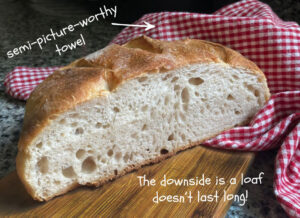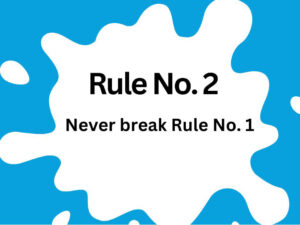Some people are drawn to social media apps—I’m drawn to weather apps.
I check weather apps more frequently than I check news apps. Weather apps tend to be less alarming than the news apps. Especially during a presidential election year.
I don’t mean to brag, but I know the predicted highs, lows and percentage possibilities for rain for the next five days in three different states. It’s my version of low-cost travel.
Earlier this morning I was lingering along the rocky coast of Maine where it was 65 with partial sun. I refilled my coffee then dropped in on Charleston, S.C., sweltering by mid-afternoon. From there I scrolled on over to the boundary waters of northern Minnesota. Jacket weather.
I check the weather app every night before I go to bed. I like to know if a storm is coming so I can crack a window to hear the rain drumming, the wind blowing and the thunder rolling.
I check the weather app every morning to see what I should wear and what kind of hair day it will be.
If my husband wants to know our local three-day outlook, he consults me, not his phone. I can tell him what the temperature was, is, will be, and if he might want to water the garden.
When I was a kid, if you wanted to know about the weather, you called the bank. Almost every town had a bank with a recorded line that gave the time and temp. To my knowledge, nobody checked it 30 times a day.
Years ago, if someone in a family was serious about the weather, they had a large instrument called a barometer hanging on a wall, often above the television. Back in the day, talking about weather qualified as entertainment. It was before Netflix and Disney+.
A barometer was like a crystal ball. People who knew how to interpret it could tell a storm was coming even before the storm knew it was coming. Those people later got together and founded the Weather Channel.
One of the best things about summer is the colorful language used to describe it. You can sweat bullets, sweat buckets or sweat like a pig, even though pigs don’t sweat. You can also roast, fry, sizzle, melt, wilt and bake. Summer is a culinary wonder.
On extremely humid days, my father-in-law used to say, “It’s close today.”
Initially, I wondered what he felt was closing in on him. After spending a week one summer in the family’s 100-year-old home, with only window fans for cooling, I figured out what he meant.
It was his version of, “It’s not the heat—it’s the humidity.”
A phrase that should be banned for all time, on penalty of having your weather app disabled, is: “Is it hot enough for ya?”
If you have to ask the question, you already know the answer.
When it’s so sweltering outside that even your weather app is melting, remember this—winter will be back before you know it.










